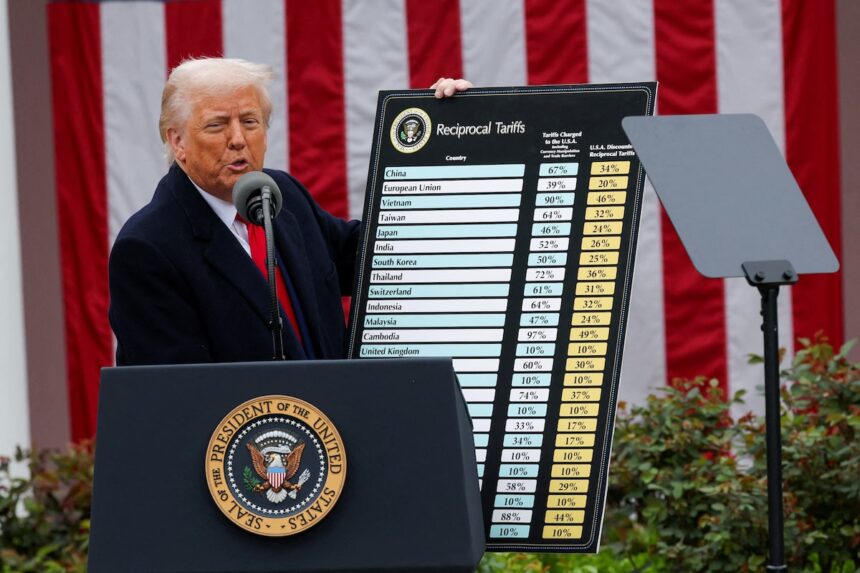The prospect of Donald Trump’s return to the White House has sent ripples of anxiety through Canadian economic circles, and for good reason. The first Trump administration’s approach to trade left lasting impressions on our cross-border relationship, but what awaits in a potential second term could be far more consequential. As the campaign rhetoric heats up, Canadians would be wise to prepare for a fundamentally different economic landscape.
When Trump first took office in 2017, his administration’s approach to international trade represented a seismic shift from decades of globalist policy. The renegotiation of NAFTA into the USMCA wasn’t just a rebranding exercise—it was a clear signal that America’s trade relationships would be evaluated through a more transactional, America-first lens. Now, as 2024 approaches, Trump’s economic advisors are formulating plans that could make his first term look like a gentle warning shot.
The centerpiece of Trump’s proposed trade agenda involves across-the-board tariffs starting at 10 percent on all imported goods, with potential increases to 60 percent or higher for Chinese products. For Canada, which sends approximately 75 percent of its exports south of the border, such measures would create immediate economic shockwaves. Our integrated supply chains, particularly in automotive manufacturing, energy, and agriculture, would face unprecedented disruption.
“What we’re seeing in Trump’s campaign promises isn’t just tough negotiating talk—it’s a fundamental reimagining of how America engages economically with the world, including its closest allies,” explains Dr. Marie Lavoie, trade economist at McGill University. “Canadian businesses need to understand that this isn’t business as usual.”
Beyond tariffs, Trump’s team has discussed using Section 232 of the Trade Expansion Act—the same mechanism previously used to impose steel and aluminum tariffs—as a broad national security tool. This approach could potentially circumvent World Trade Organization restrictions, creating a quasi-legal framework for protectionist policies that would be difficult to challenge through traditional channels.
For Canada’s resource sector, particularly energy and mining, the implications are mixed. While Canadian oil could benefit from reduced global competition in the U.S. market, the potential for retaliatory measures from other trading partners could close doors elsewhere. Our manufacturing sector, already struggling with productivity challenges, would face even steeper hurdles under a high-tariff regime.
The anticipated economic impact isn’t merely theoretical. TD Economics projects that broad-based American tariffs could reduce Canadian GDP by up to 1.2 percent within two years—equivalent to approximately $30 billion in economic activity. Job losses could exceed 150,000 across various sectors, with manufacturing regions in Ontario and Quebec bearing the brunt of the impact.
What makes this situation particularly challenging is the limited toolkit available to Canadian policymakers. Our economy simply doesn’t have the scale to engage in tit-for-tat tariff battles with our largest trading partner. When previously faced with steel and aluminum tariffs, Canada’s strategic countermeasures targeted politically sensitive products from key Republican states, but such tactics have diminishing returns as tariffs broaden.
Perhaps most concerning is how Trump’s trade vision aligns with larger geopolitical objectives. His advisors have openly discussed using trade as leverage to reshape immigration policies, energy partnerships, and security arrangements. For Canada, this means trade negotiations could become entangled with unrelated issues like border security or defense spending—creating complex, multi-dimensional challenges for our diplomatic corps.
Canadian businesses aren’t standing still. Many have begun diversifying their customer bases and supply chains following the lessons of the first Trump administration. The Comprehensive and Progressive Agreement for Trans-Pacific Partnership (CPTPP) and the Canada-European Union Comprehensive Economic and Trade Agreement (CETA) provide alternative markets, though none can fully replace the American relationship.
“The smart strategy isn’t hoping this storm passes, but preparing for fundamental changes to our trading relationship,” notes Jennifer Bancroft, director of the Canadian Chamber of Commerce’s trade policy division. “Companies that strengthen their non-U.S. relationships now will be better positioned regardless of election outcomes.”
For everyday Canadians, the most visible impact would likely come through higher prices. Economists estimate that a 10 percent tariff on Canadian goods would translate to approximately 2-3 percent higher consumer prices in many categories—from automobiles to food products. This inflationary pressure would arrive at a time when many households are already struggling with affordability concerns.
As we face this uncertain future, Canada’s best defense may be proactive engagement rather than reactive response. Strengthening trade relationships with emerging economies, investing in productivity-enhancing technologies, and developing more resilient domestic supply chains are strategies that serve us well regardless of who occupies the White House.
The fundamental question facing Canada isn’t whether we can avoid American protectionism, but how we adapt to it while maintaining our economic sovereignty and prosperity. As one Ottawa insider recently put it, “We need to prepare for the worst while working toward the best—and recognize that our economic future may depend on how successfully we navigate these treacherous waters.”
For more insights on global trends affecting Canadian culture and business, visit CO24 Trends or explore our in-depth analysis at CO24 Opinions.










